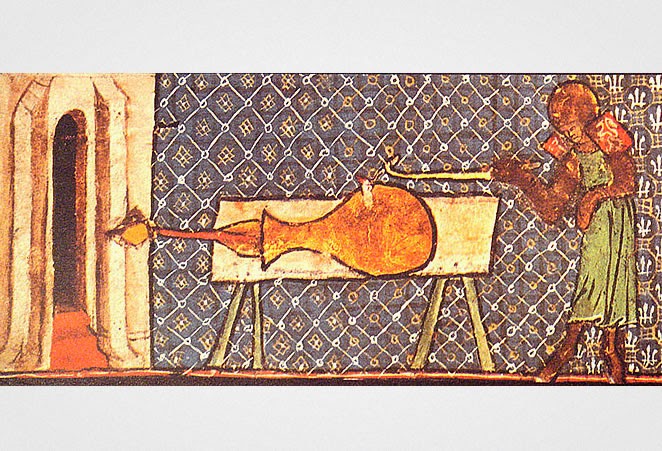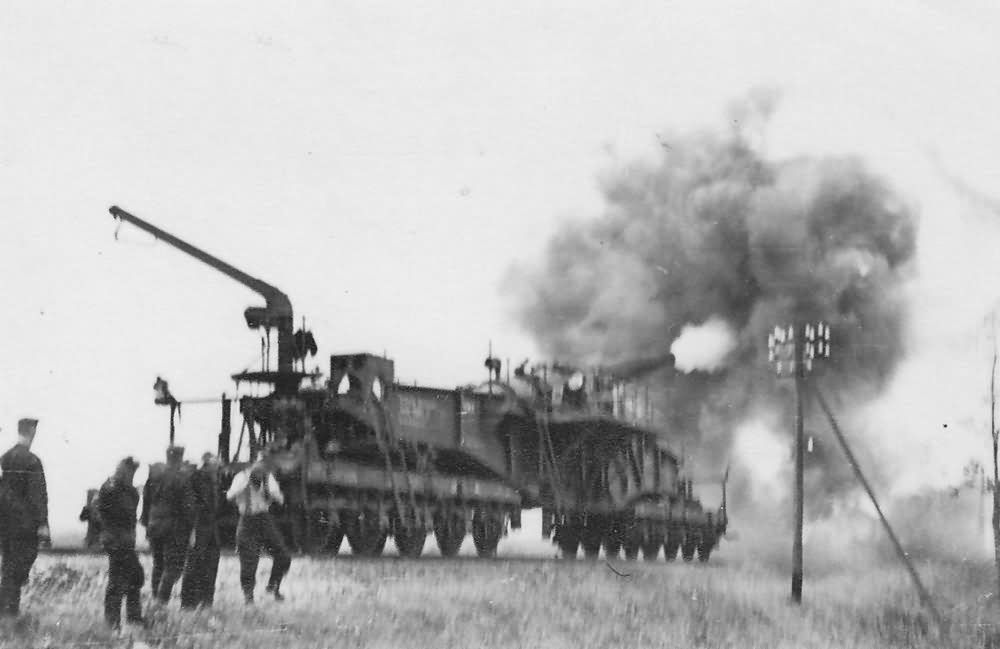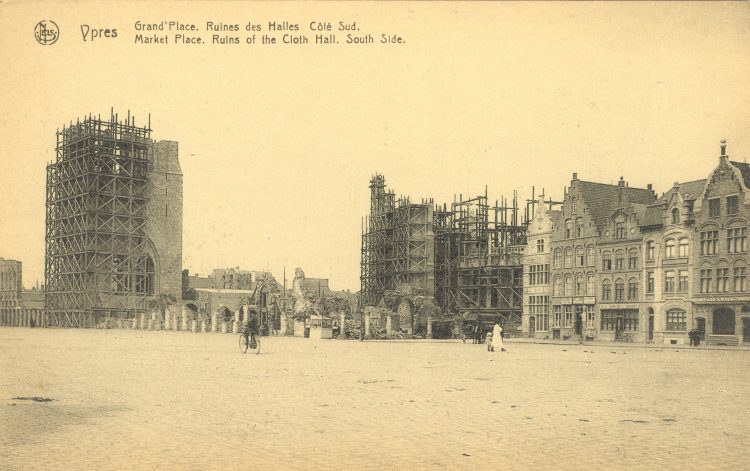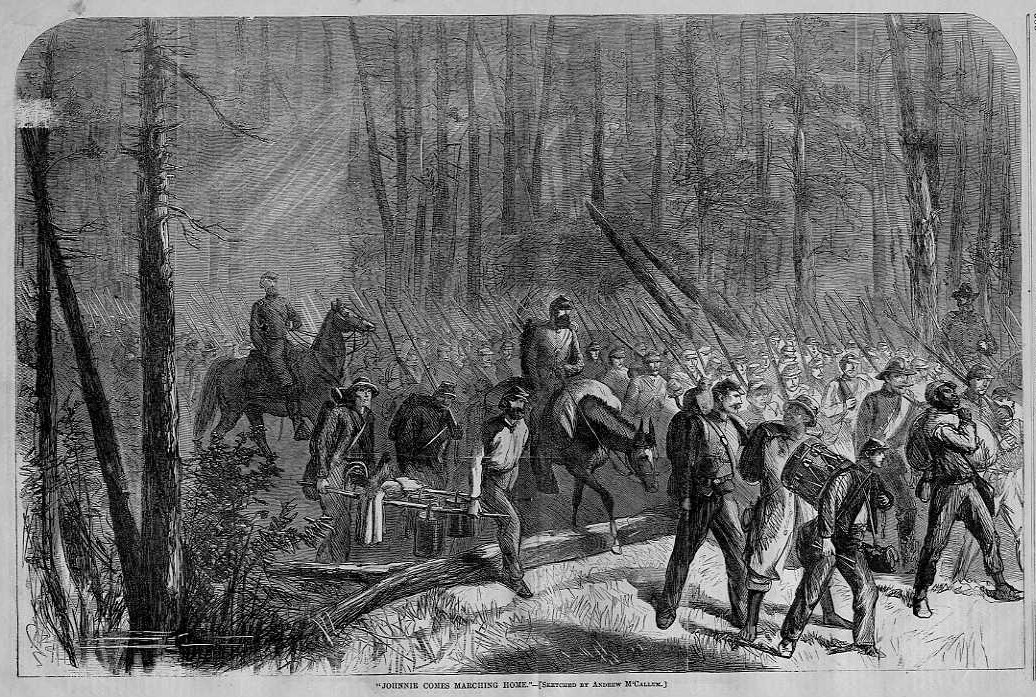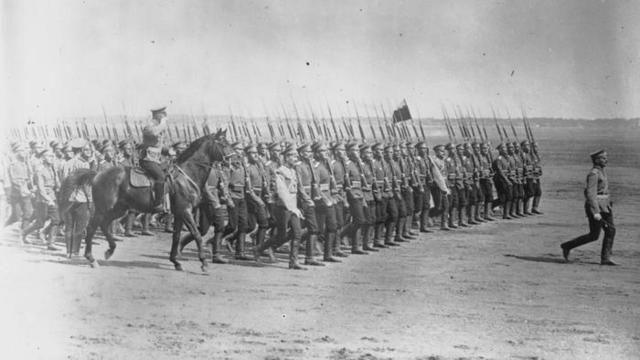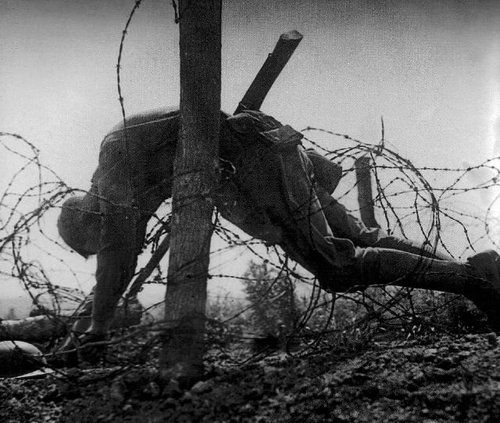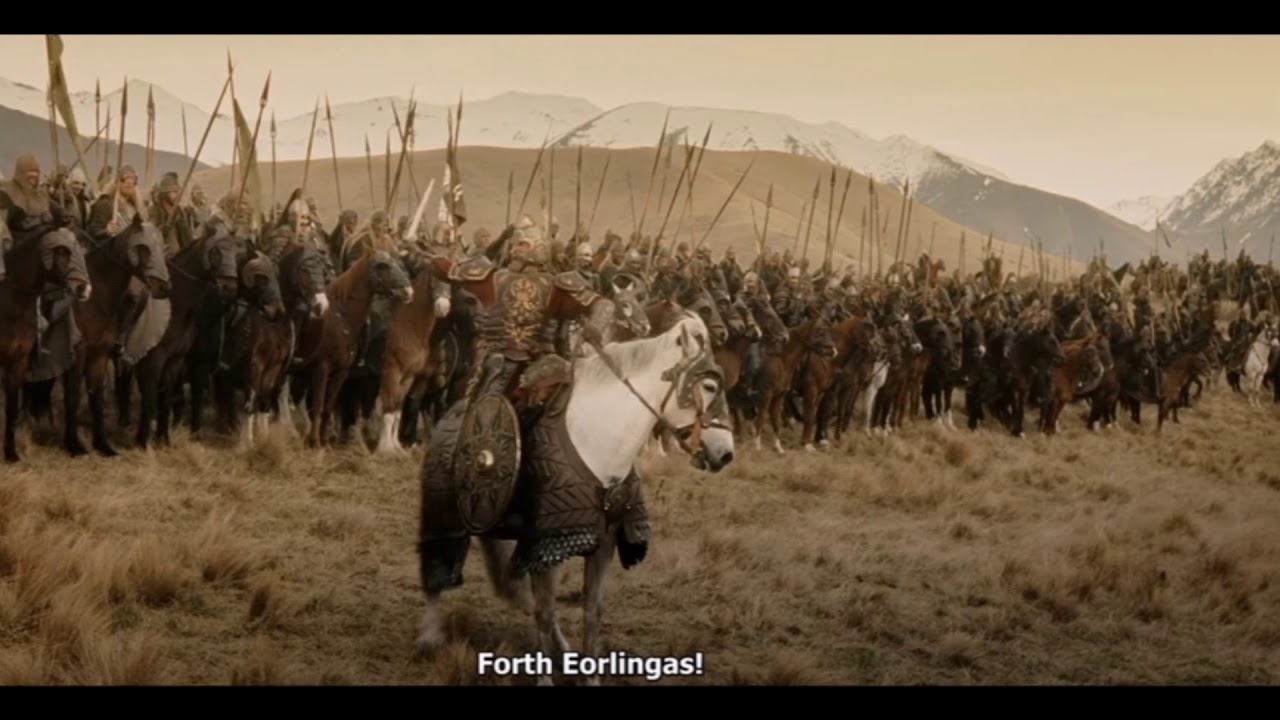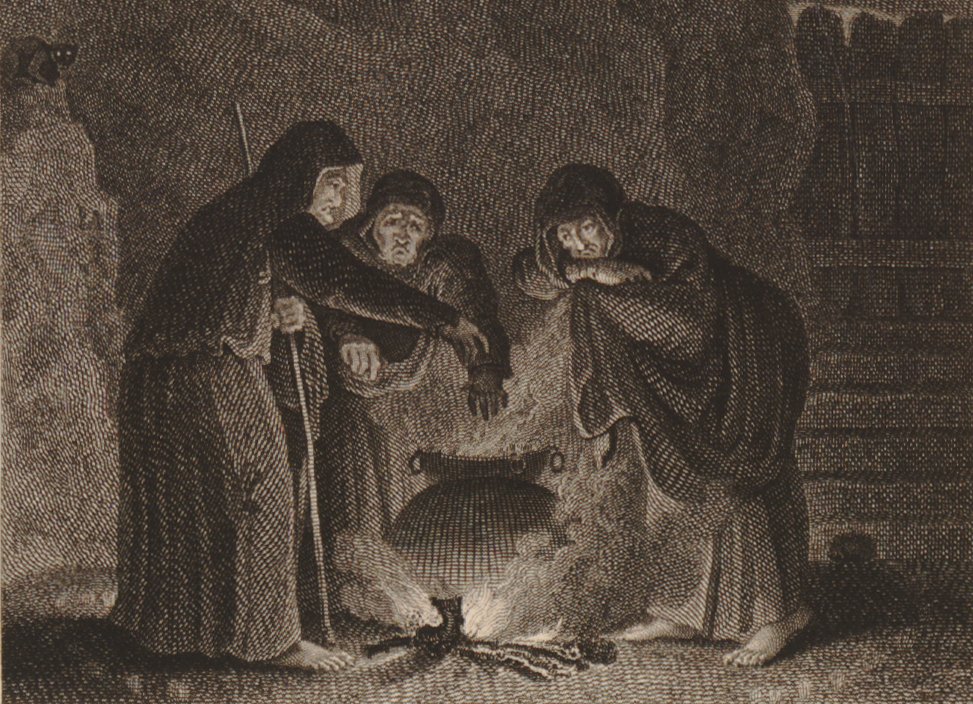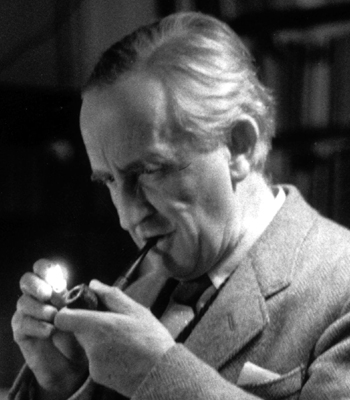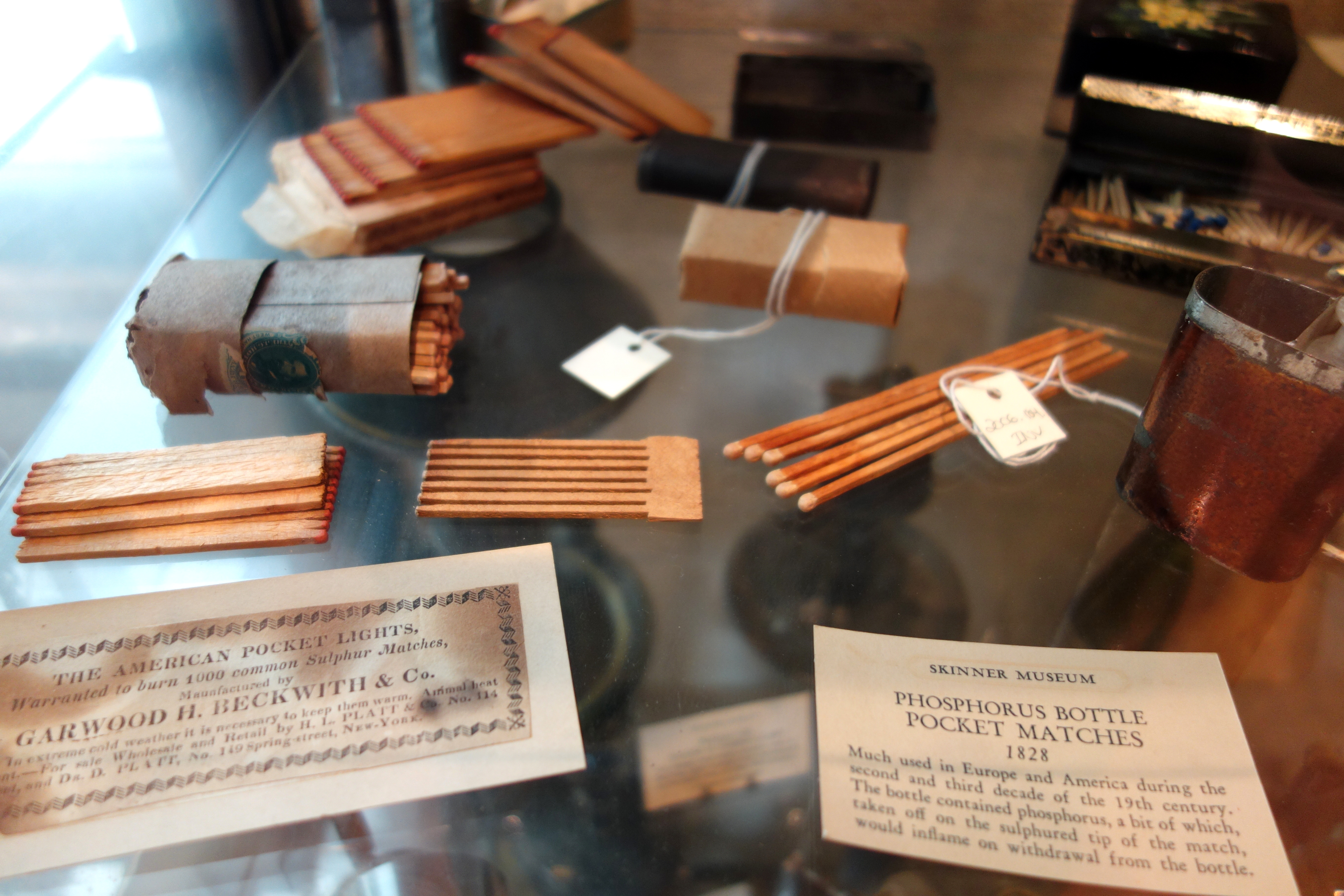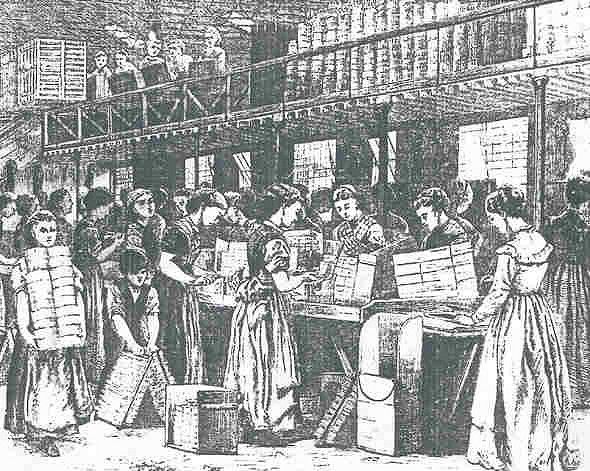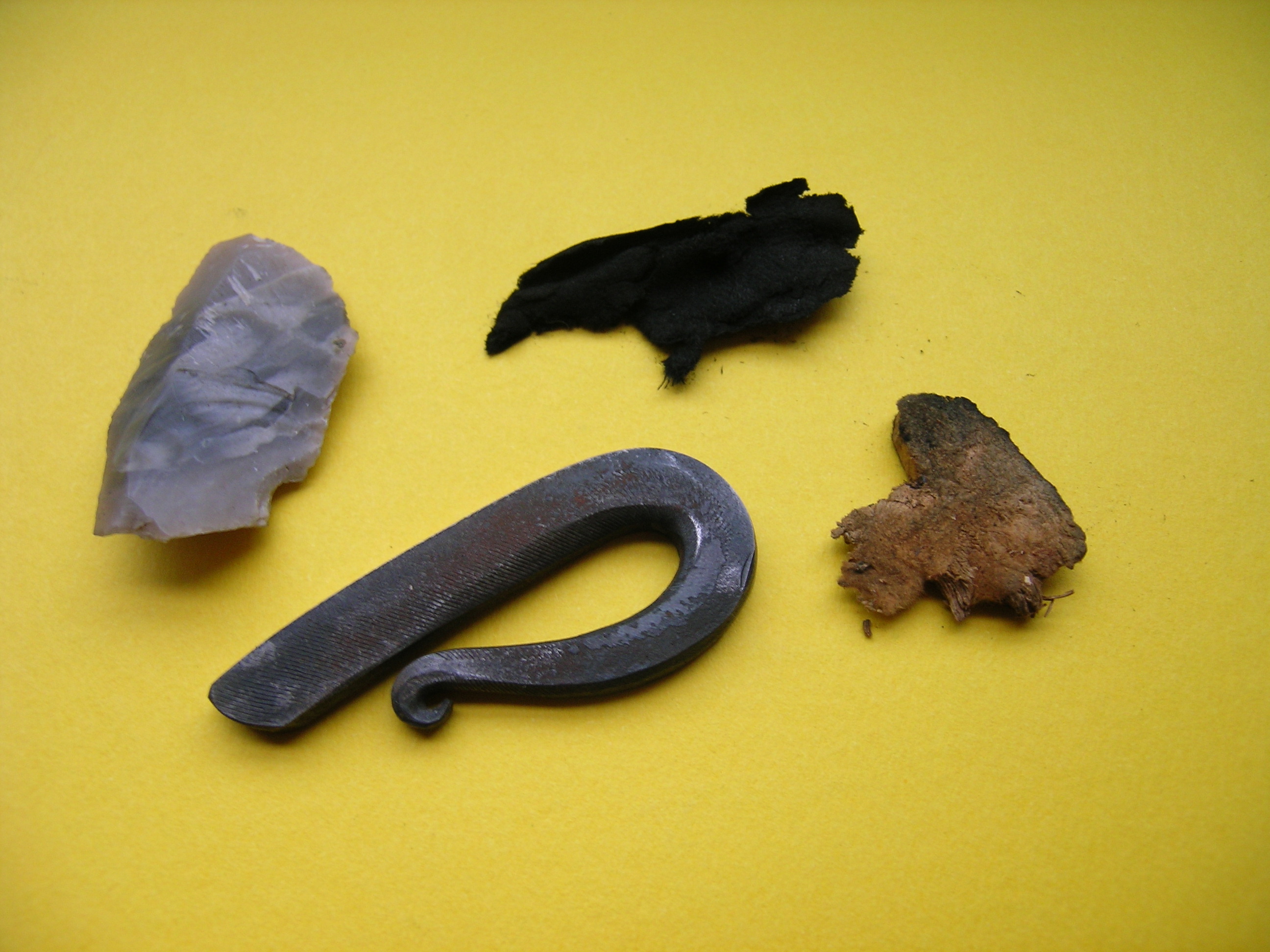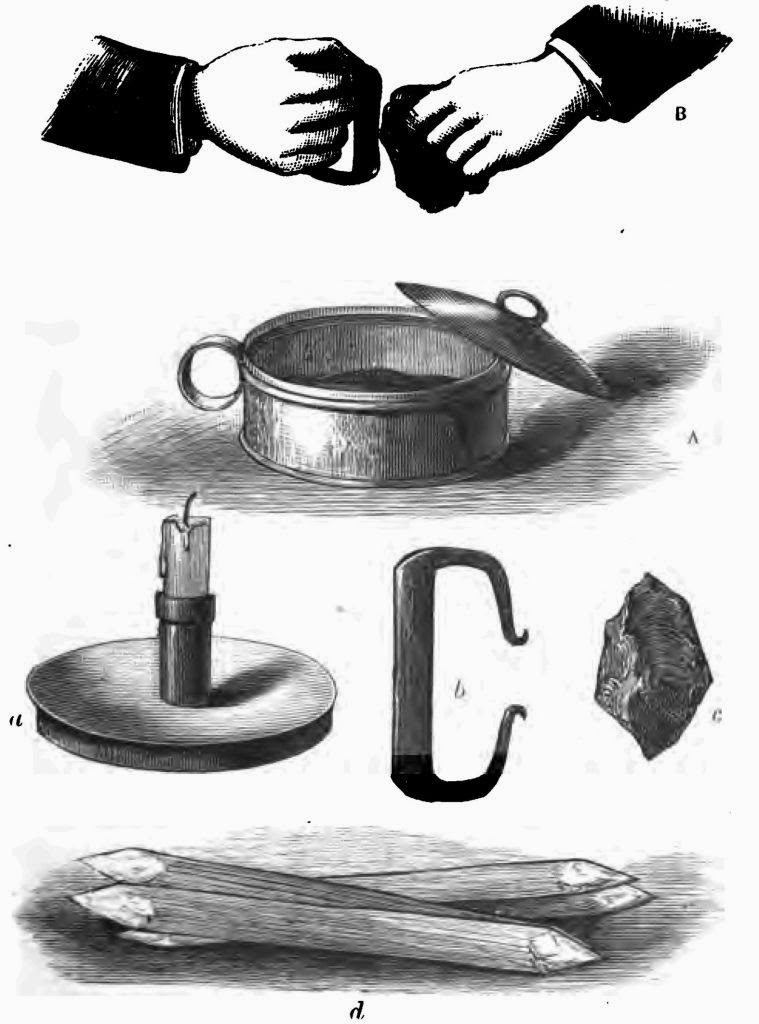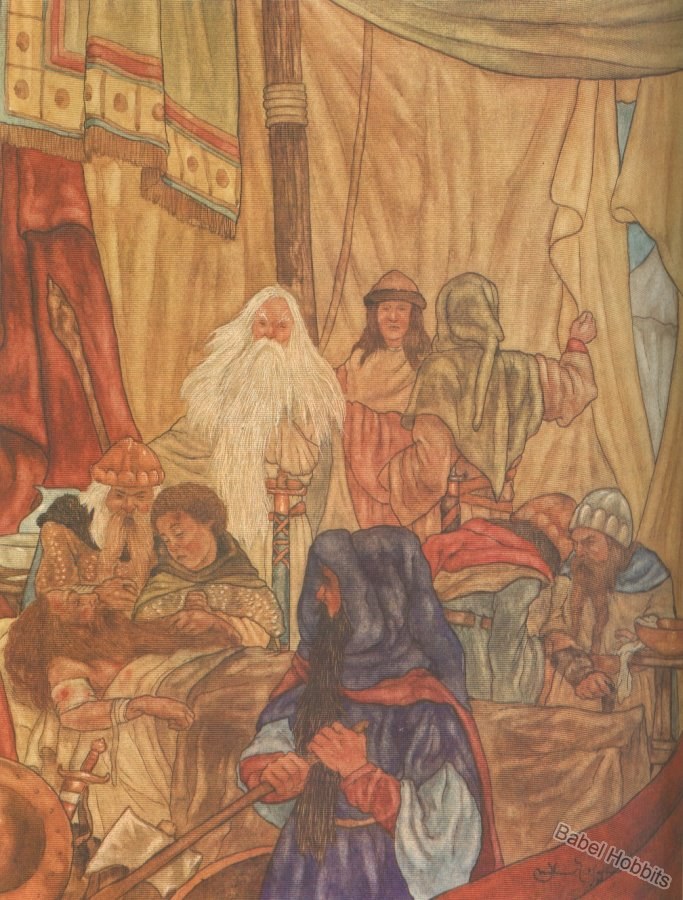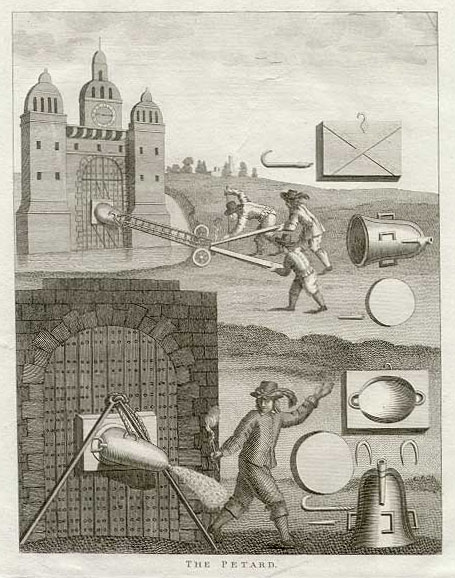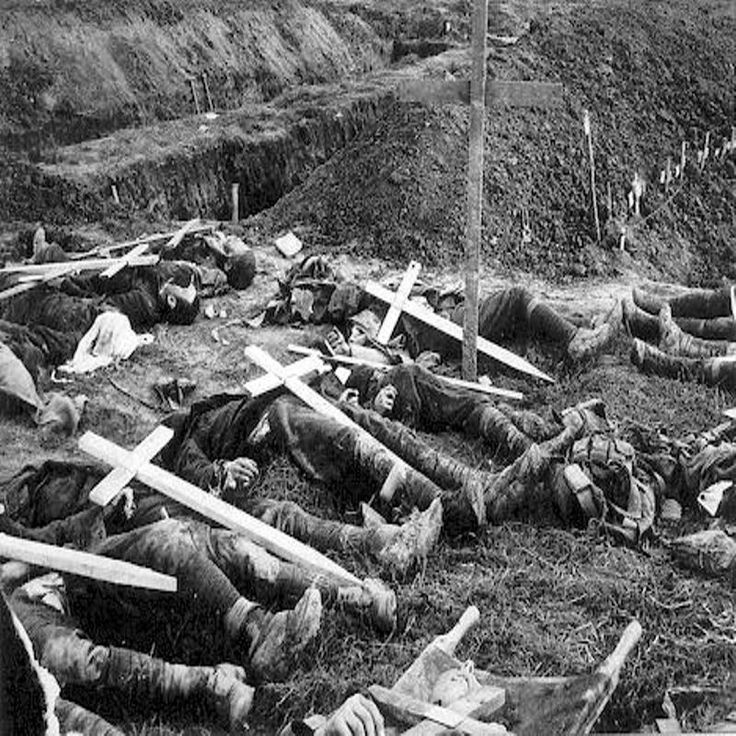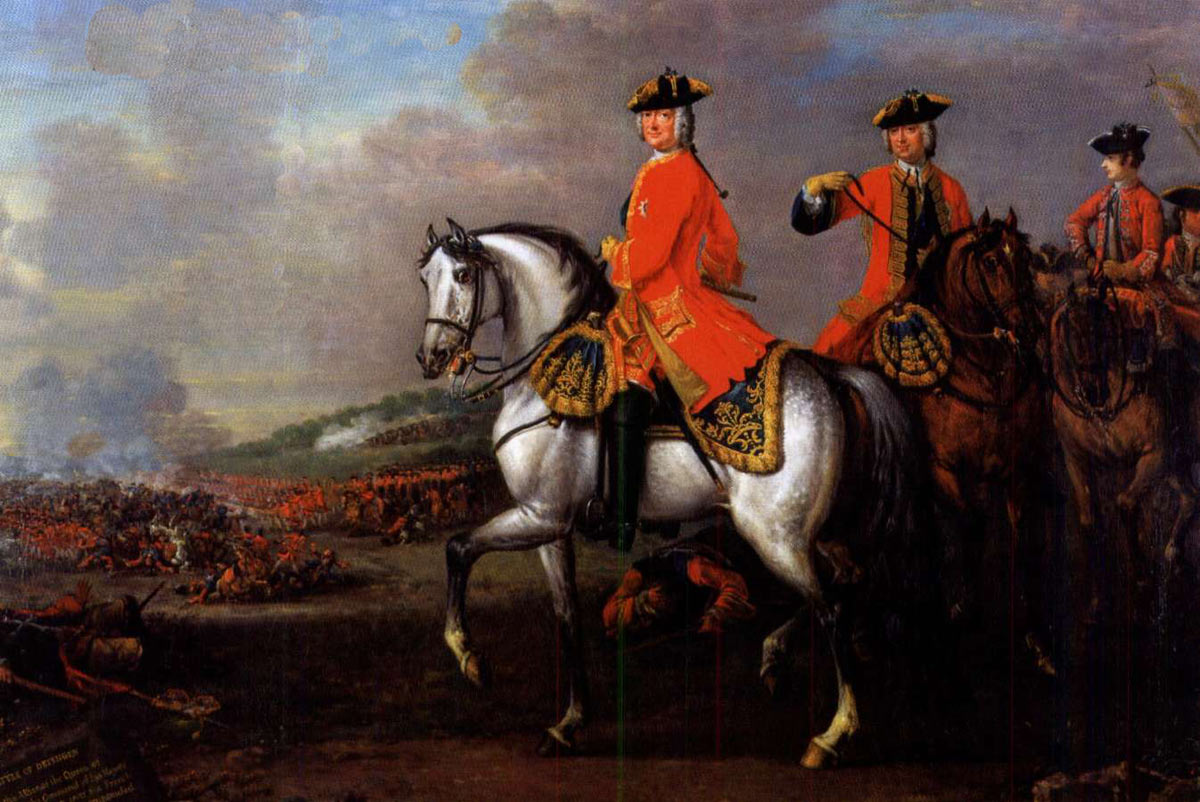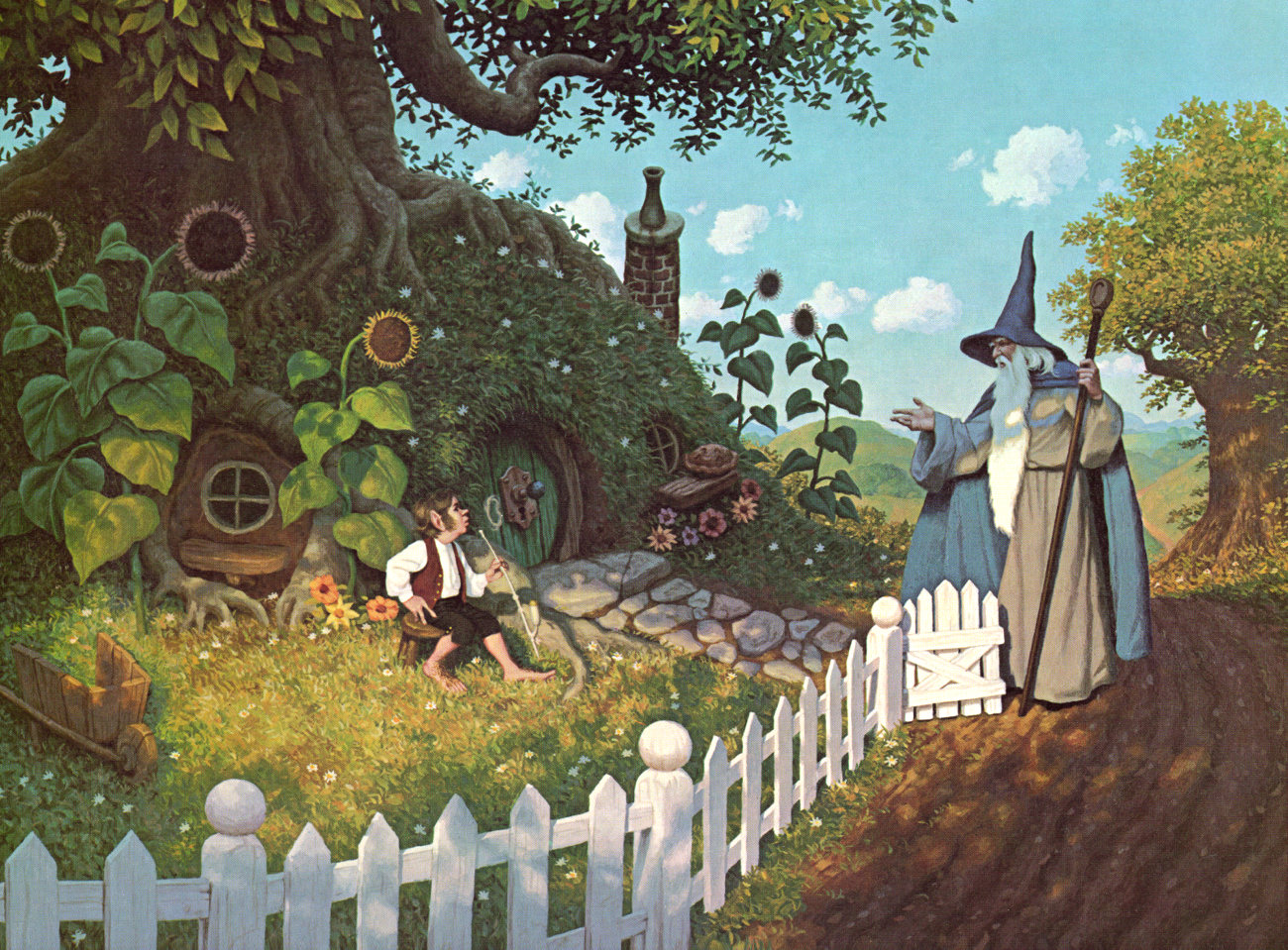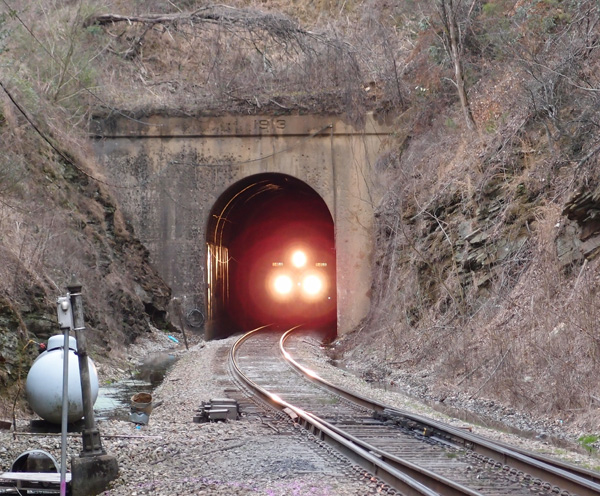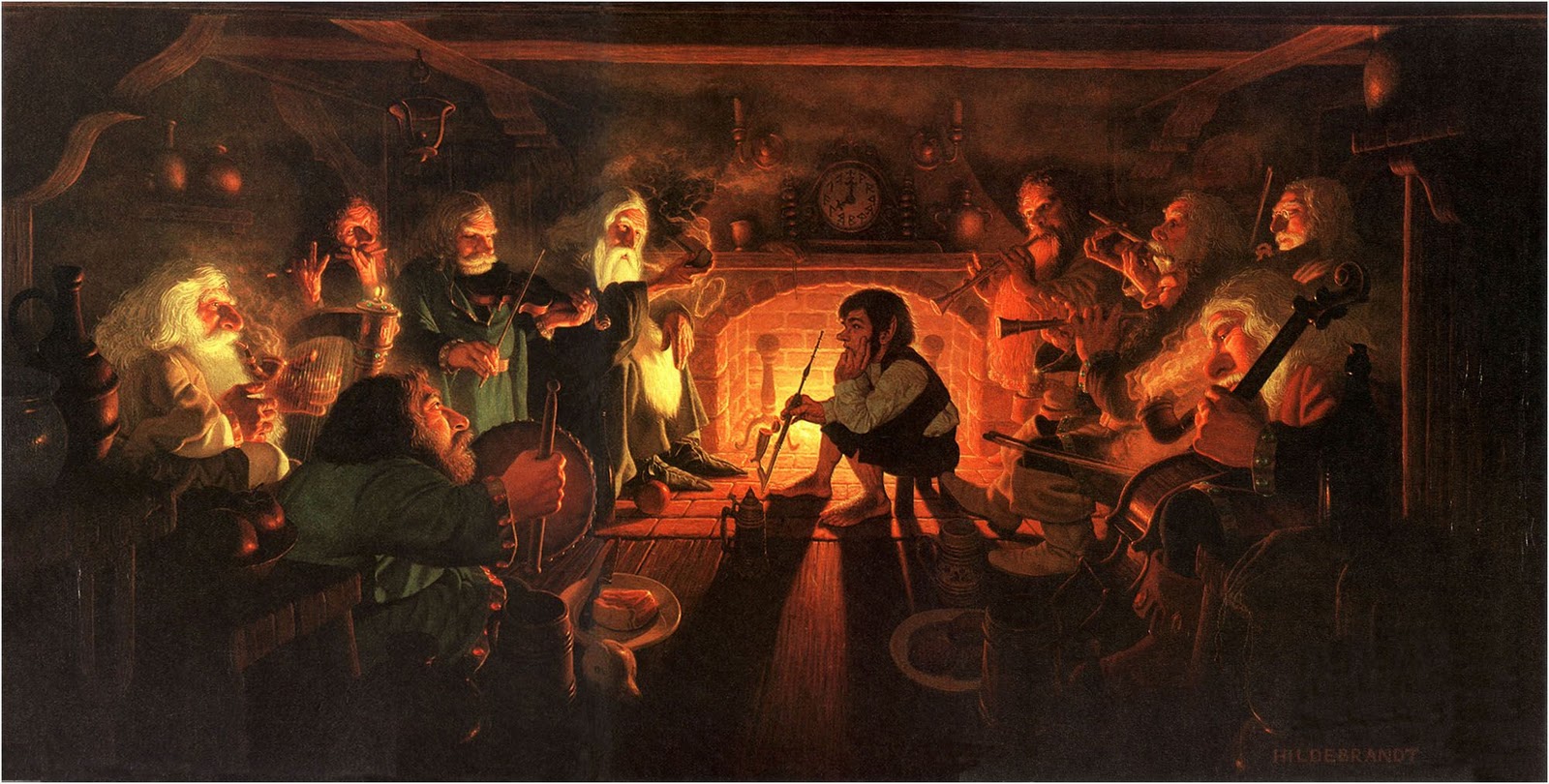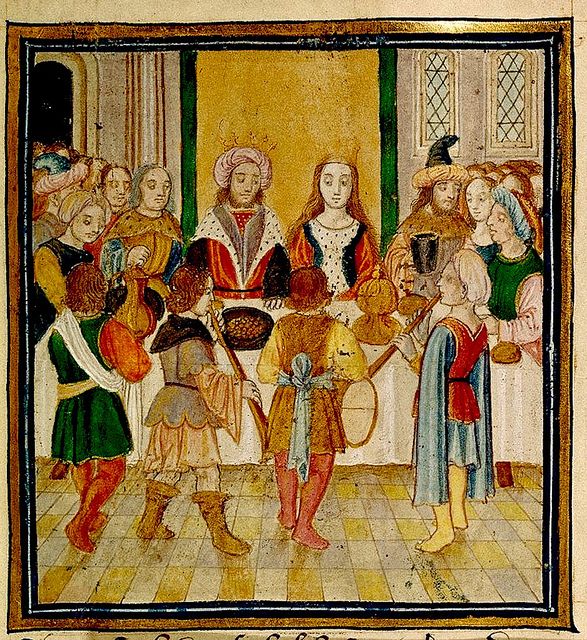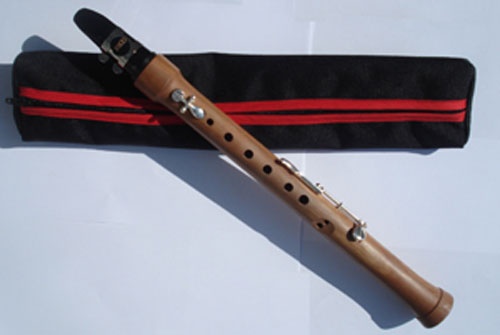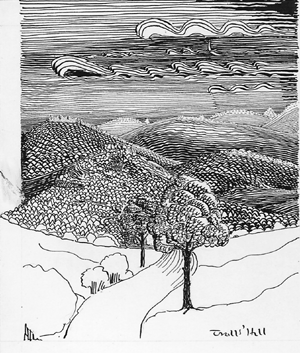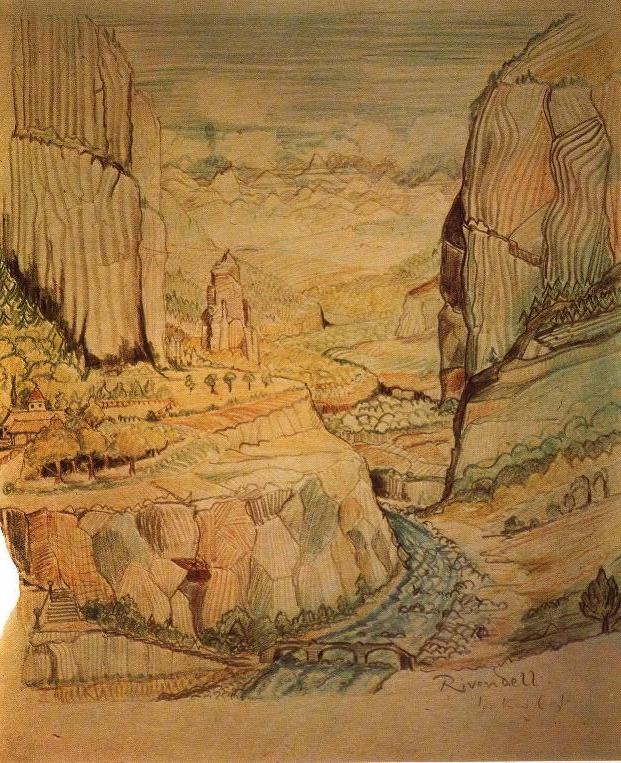As always, dear readers, welcome.
As far as I’ve come to know her, Beatrix Potter (1866-1943)

(with her collie, Skep)
was not one to dwell upon horrors.
And yet, the first of her stories I ever had read to me as a small child filled me with dread, almost from its very opening:
“ ‘Now my dears,’ said old Mrs. Rabbit one morning, ‘you may go into the fields or down the lane, but don’t go into Mr. McGregor’s garden: your Father had an accident there; he was put in a pie by Mrs. McGregor.’ “
This was said so casually, as if being murdered by an angry gardener and then eaten was only “an accident”, that I knew that the story to come was not going to be a sunny one.
“Flopsy, Mopsy, and Cotton-tail, who were good little bunnies, went down the lane to gather blackberries:”
Had I been able to read this for myself, that colon after “blackberries” might have tipped me off that something awful was about to happen—
“But Peter, who was very naughty, ran straight away to Mr. McGregor’s garden, and squeezed under the gate!”
You can see already where this is going—towards another “accident” and Peter in a pie. Fortunately, this doesn’t happen, although Peter, after stuffing himself on Mr. McGregor’s lettuce, French beans, and radishes, is spotted by the dread gardener himself and much of the middle of the story is taken up with his relentless pursuit of Peter, in which Peter loses his shoes, but
“I think he might have got away altogether if he had not unfortunately run into a gooseberry net, and got caught by the large buttons on his jacket. It was a blue jacket with brass buttons, quite new.”
Peter escapes the murderous McGregor, leaving his jacket behind and, eventually, even finds his way home, but, menacingly, the gardener hangs up the lost shoes and jacket “for a scare-crow to frighten the blackbirds”—one wonders what he did with Peter’s father’s clothes!

This is, of course, The Tale of Peter Rabbit,

first published in 1902 and Beatrix Potter’s first successful children’s book, with 22 more to come, including two nursery rhyme collections, between 1902 and 1930.

The stories are simple, as appropriate for small books for small children, but the illustrations are anything but, being little marvels of depiction, everything from the anthropomorphized animals who are the main characters, to the world, both natural and human, in which they function. This shouldn’t be surprising in that the author was herself both a highly-talented draftswoman and a great naturalist and had been since childhood.

At some point later in life, I must have gotten over my fear of the bloody-handed McGregor,

as I found myself increasingly interested in his creator and her complex life and personality—an upper-class Victorian/Edwardian lady who, though barred from the sorts of things her naturalist life should have allowed her—an academic education, dealing with male naturalists on their own turf, for example—still managed to publish extensively, gain wealth from it, employ that wealth in intelligent ways, and leave behind not only such lovely books and wonderful art, but also a large expanse of land in the English Lake District which forms much of a National Park. (You can begin learning about her here: https://en.wikipedia.org/wiki/Beatrix_Potter You can also read a first edition of The Tale of Peter Rabbit here: https://www.gutenberg.org/cache/epub/14838/pg14838-images.html )
Someone else who clearly knew at least some of her work mentions it somewhat obliquely in an angry letter to his publisher on the subject of a Dutch translation of his work:
“If you think I am being absurd, then I shall be greatly distressed; but I fear not altered in my opinions. The few people I have been able to consult, I must say, express themselves equally strongly. Anyway I am not going to be treated a la Mrs Tiggywinkle=Poupette a l’epingle. Not that B [eatrix] P [otter] did not give translators hell. Though possibly from securer grounds than I have. I am no linguist, but I do know something about nomenclature, and have specially studied it, and I am actually very angry indeed.” (letter to Rayner Unwin, 3 July, 1956, Letters, 361)
This is the only direct reference I’ve seen to “BP’s” work in Tolkien’s letters, but I would offer proof of another sort in another work:
“The place was full of goblins running about, and the poor little hobbit dodged this way and that…slipped between the legs of the captain just in time, got up, and ran for the door.
It was still ajar, but a goblin had pushed it nearly to. Bilbo struggled but he could not move it. He tried to squeeze through the crack. He squeezed and squeezed and he stuck! It was awful. His buttons had got wedged on the edge of the door and the door-post. He could see outside into the open air…but he could not get through.
Suddenly one of the goblins inside shouted: ‘There is a shadow by the door. Something is outside!’
Bilbo’s heart jumped into this mouth. He gave a terrific squirm. Buttons burst off in all directions. He was through, with a torn coat and waistcoat, leaping down the steps like a goat, while bewildered goblins were still picking up his nice brass buttons on the doorstep….
Bilbo had escaped.” (The Hobbit, Chapter Five, “Riddles in the Dark”)
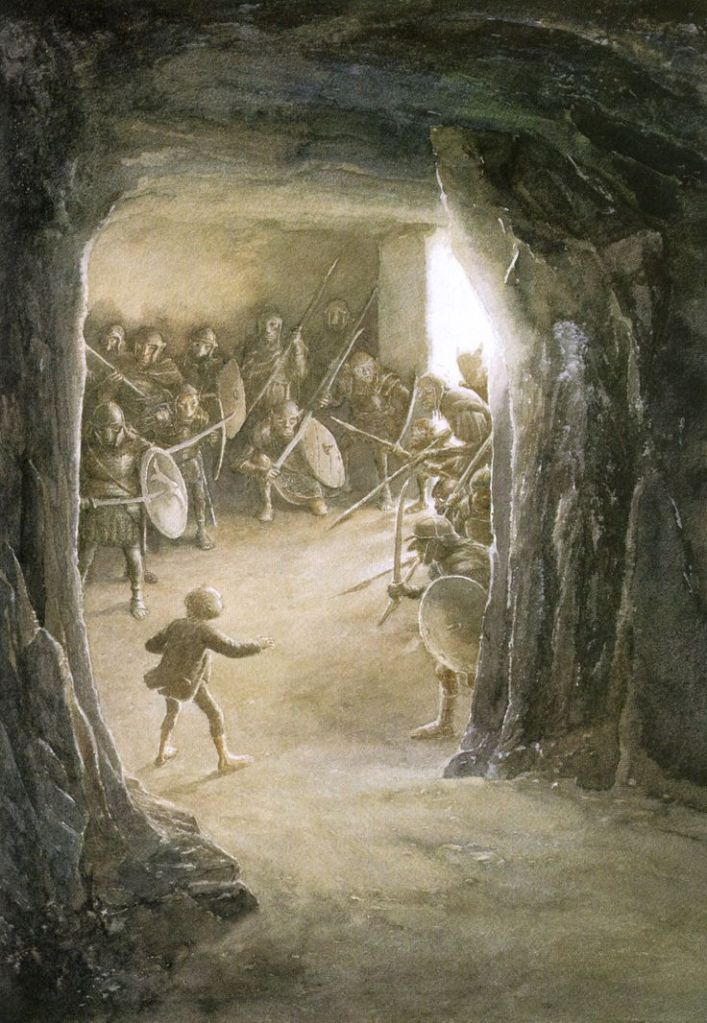
(Alan Lee)
What do you suppose JRRT as a child made of that violent, pie-eating McGregor?

As always, thanks for reading.
Stay well,
Always listen to your mother and you’ll never lose your buttons,
And, as ever, remember that there’s
MTCIDC
O




























